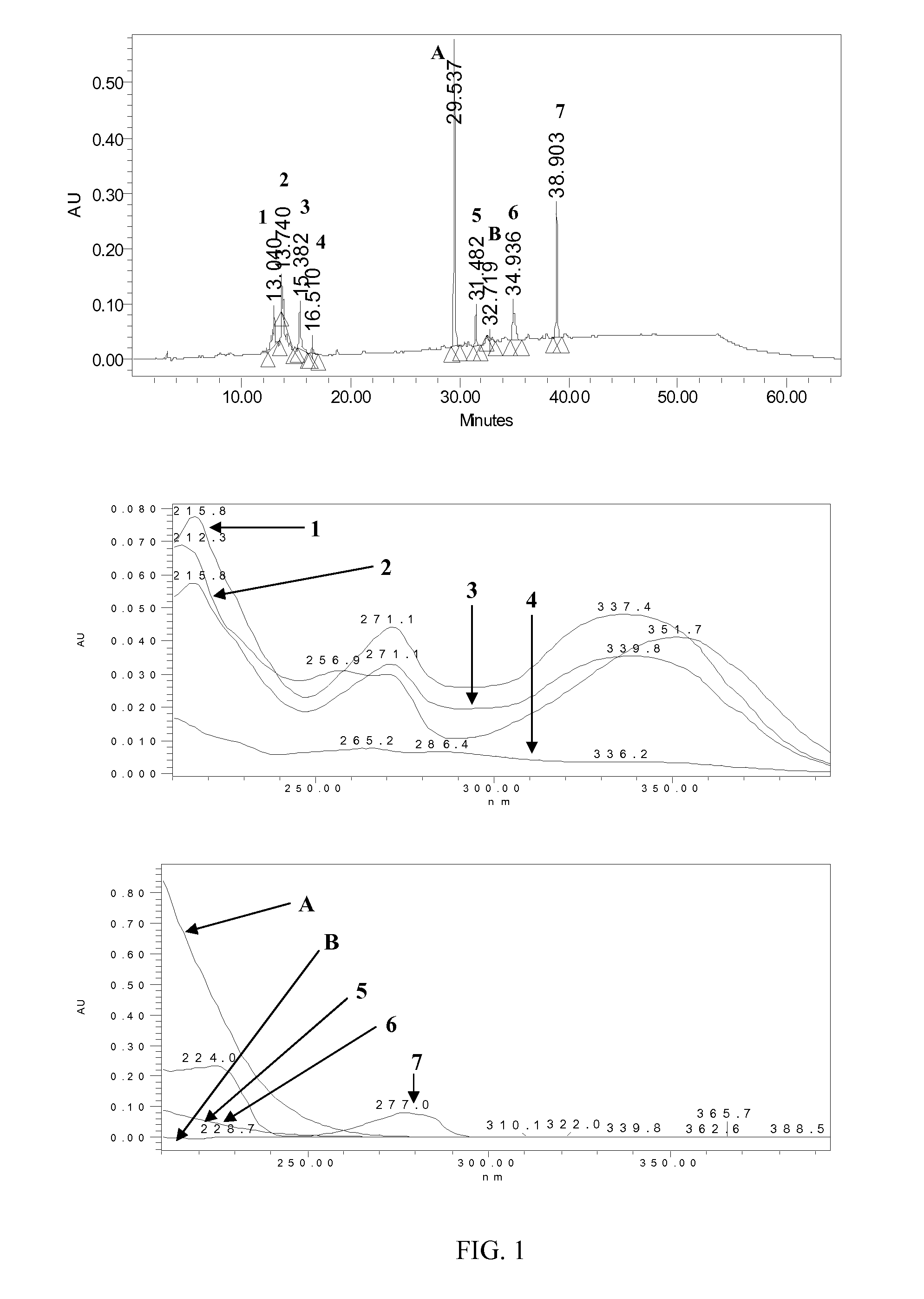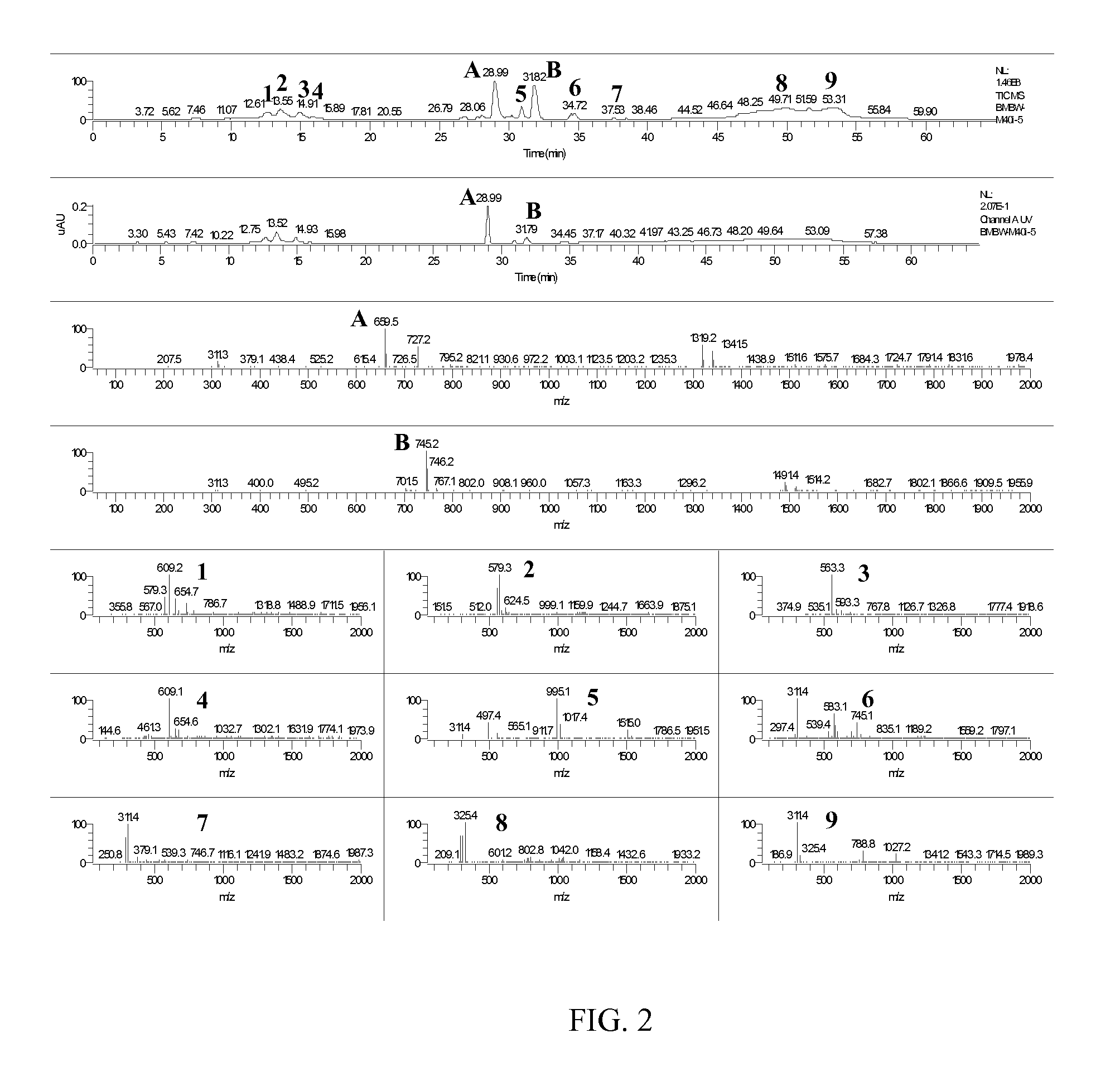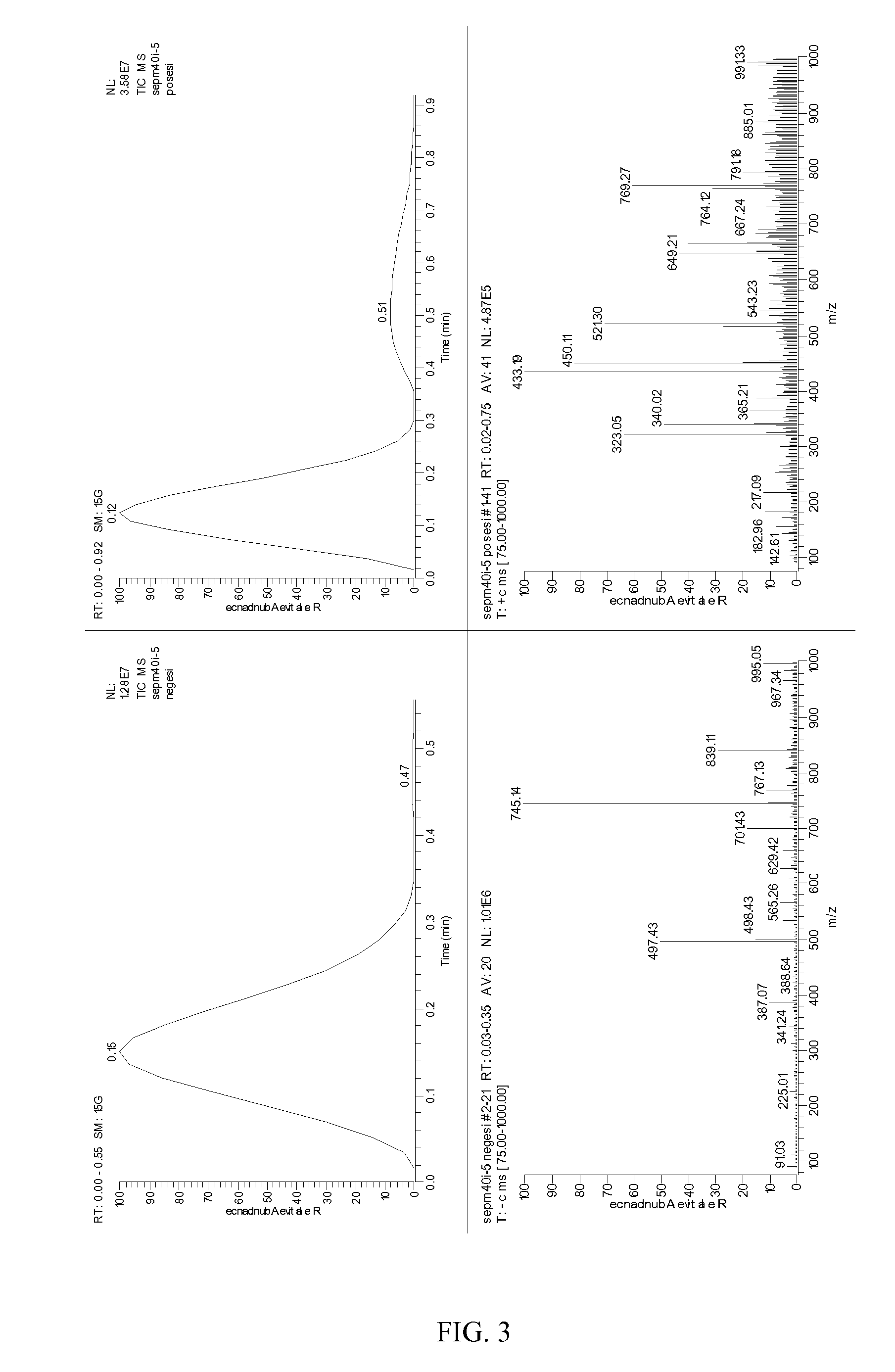Therapeutic compositions and methods of treatment with capsianoside-type compounds
- Summary
- Abstract
- Description
- Claims
- Application Information
AI Technical Summary
Benefits of technology
Problems solved by technology
Method used
Image
Examples
example 1
[0062] A rat hindpaw assay was used to determine the therapeutic effectiveness of various extracts / compounds as analgesics in the present invention.
[0063] Sprague-Dawley rats (225-250 g, male) were anesthetized with urethane and placed on their sides on a disposable Chux pad. Both hindpaws for each rat were blackened with India ink which was allowed to dry for 10 minutes. An ELH projector lamp calibrated to a standard mW / cm2 was used as a pain stimulus and was condensed into an area of 5×15 mm on each hindpaw and placed perpendicular to, and 72 mm from, each hindpaw.
[0064] Multiple baseline hindpaw withdrawal latency times were recorded (in seconds) for each medial and each lateral surface of each hindpaw. Subsequently, 100 μl of 1 μmolar capsaicin was applied with a pipette to cover one hindpaw of each animal and allowed to dry for 10 minutes, rendering the capsaicin-treated hindpaw hypersensitive to pain stimulus relative to the non-capsaicin treated ...
example 2
Isolation of Analgesic Compounds
[0067] Twelve (12) sweet green bell peppers (Capsicum anuum ssp. grossum) with stems, seeds and septae removed were put through a juice extractor (Panasonic model # MJ66PR) to yield 1200 ml liters of unfiltered juice. The juice was suction filtered with coarse filter paper through a Buchner funnel to yield 1.0 liters of filtered green pepper juice.
[0068] 500 ml of filtered juice was partitioned with 500 ml of diethyl ether to remove waxes and chlorophylls. This partitioning was performed for a total of three times. Three layers were separated, the aqueous layer, the ether layer and an intermediate flocculent layer. Aliquots of each layer were tested by the Analgesic Bioassay (Example 1). Only the aqueous layer exhibited analgesic activity.
[0069] The aqueous layer was rotary evaporated at room temperature to 10 ml of a light brown gel which was triturated with two successive volumes of 100 ml methanol at room temperature to precipitate out long chai...
example 3
Sub-Fractionation of Fraction E
[0072] 1.0 g of the original concentrated methanolic extract was fractionated by column chromatography with a stationary phase of C-18 reverse phase silica gel (Sep-Pak 35 cc C-18 10 g, Waters, Chicago, Ill.). 20 ml fractions were eluted with a gravity-fed, gradient solvent system of 0:1 to 1:0 methanol / water (mobile phase) in increments of 20% methanol per step.
[0073] 1.0 g of the concentrated 80% methanol fraction was re-fractionated by column chromatography with a stationary phase of C-18 reverse phase silica gel (Sep-Pak 35 cc C-18 10 g, Waters, Chicago, Ill.). 20 ml fractions were eluted with a gravity-fed, gradient solvent system of 0:1 to 1:0 methanol / water (mobile phase) in increments of 20% methanol per step. The 80% methanol fractions were collected in 5 ml aliquots labeled EEa, EEb, EEc and EEd. All of these sub-fractions exhibited analgesic activity with the greatest analgesic activity noted in fraction EEa.
PUM
| Property | Measurement | Unit |
|---|---|---|
| Mass | aaaaa | aaaaa |
| Mass | aaaaa | aaaaa |
| Mass | aaaaa | aaaaa |
Abstract
Description
Claims
Application Information
 Login to View More
Login to View More - R&D
- Intellectual Property
- Life Sciences
- Materials
- Tech Scout
- Unparalleled Data Quality
- Higher Quality Content
- 60% Fewer Hallucinations
Browse by: Latest US Patents, China's latest patents, Technical Efficacy Thesaurus, Application Domain, Technology Topic, Popular Technical Reports.
© 2025 PatSnap. All rights reserved.Legal|Privacy policy|Modern Slavery Act Transparency Statement|Sitemap|About US| Contact US: help@patsnap.com



